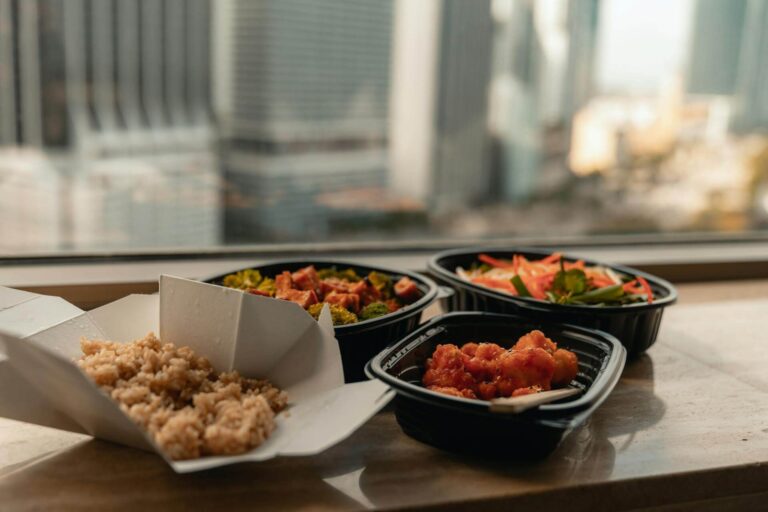Businesses and consumers alike are paying greater attention to sustainability issues. The food industry faces one particular difficulty: finding eco-friendly and practical packaging solutions. People want environmentally responsible, durable, easy-to-use, and cost-effective options.
Food businesses frequently turn to carry out containers as one convenient solution for easy transport, storage, and disposal. These containers make life simpler for businesses and consumers alike.
Transition To Eco-Friendlier Packaging Solutions
Sustainability-oriented packaging has evolved beyond being just an environmental trend; it has become an absolute requirement. Governments worldwide have instituted stringent plastic waste laws, and while businesses adopt eco-friendly options as part of their products; consumers too have become more conscious in selecting brands that prioritize environmental responsibility as part of their purchasing decisions.
Traditional packaging materials like plastic and Styrofoam take centuries to break down, leading to widespread pollution and long-term environmental harm. As consumer awareness rises, companies that fail to adapt may lose customers to competitors with sustainable business models.
As customers’ expectations evolve, many businesses are turning towards eco-friendly materials like biodegradable plastics, compostable containers, and recycled paper packaging in an attempt to meet them. Although such alternatives reduce waste while simultaneously decreasing carbon emissions associated with food packaging, their use does present its own set of challenges.
Sustainable packaging options may be more costly and limited in availability depending on a business’s location or supply chains, yet still provide sufficient protection from leakage, contamination, and spoilage of food products. Businesses must make sure these sustainable materials offer sufficient protection.
Convenience Plays an Essential Role in Food Packaging
While sustainability should always come first, convenience remains of equal importance when designing food packaging solutions. People require food containers that are simple to carry, store, and dispose of, especially with the increasing popularity of takeout, meal kits, and on-the-go snacks. Businesses must consider several criteria when crafting such designs for consumers’ benefit.
Durability and portability are critical in protecting food products from leakage, spills, or physical damage during transport and consumption. Resealability plays an integral part in keeping them fresh when not consumed all at once.
Sustainable packaging must meet certain expectations. Some biodegradable options might not be as durable, causing leakage or damage. Some compostable packaging may require specific disposal methods that might not always be easily available to consumers.
Consumer Expectations and Brand Perception
Packaging goes beyond protecting food; it also expresses brand values to customers when they first encounter your product. A well-designed eco-friendly package may signal that its makers care about sustainability while excessive plastic can give an impression of wastefulness.
Brand perception can play an instrumental role in customer retention. Consumers tend to support businesses that reflect their personal beliefs, with sustainability becoming an increasing consideration in buying decisions. If packaging can combine aesthetic appeal and environmental friendliness into its design, this can further build customer trust for any given business.
Businesses should also be transparent regarding their packaging materials. If a company claims it uses “green” packaging materials, consumers will appreciate being informed on where the materials are sourced, produced, and disposed of. Consumers who appreciate authenticity are more likely to support brands with sustainable solutions that provide real solutions.
Finding a Balance
Balancing sustainability with convenience requires innovation and strategic planning. One effective approach to striking this delicate balance involves using hybrid packaging solutions made up of biodegradable and recyclable materials for maximum durability, with minimum waste generated. Minimalist designs also help by cutting back on excess materials for simpler yet functional designs that serve their intended purpose without unnecessary additions; additionally, educating consumers on correct disposal methods may make an immense difference as many are unfamiliar with how best to dispose of compostable or recyclable packaging correctly.
Selecting appropriate materials is also important; compostable containers now feature secure lids to avoid accidental spillage, offering both functionality and sustainability benefits. Businesses should partner with packaging manufacturers who specialize in these eco-friendly solutions, which specialize in cost-cutting measures without sacrificing quality or standards. By investing in research and innovation, food companies can develop packaging that fulfills modern consumer demand while contributing towards creating a more sustainable future.
Conclusion
Demand for sustainable food packaging is on the rise, while convenience remains equally as crucial. Businesses must find ways to incorporate eco-friendly materials without compromising durability or practicality; from using innovative materials to changing designs altogether, finding solutions that satisfy both consumer expectations and environmental needs should be the goal of business operations. Likewise, organizations need to recognize how packaging impacts consumer behaviors; choosing thoughtful packaging options may influence purchasing decisions, build brand loyalty, and improve a company’s reputation.


